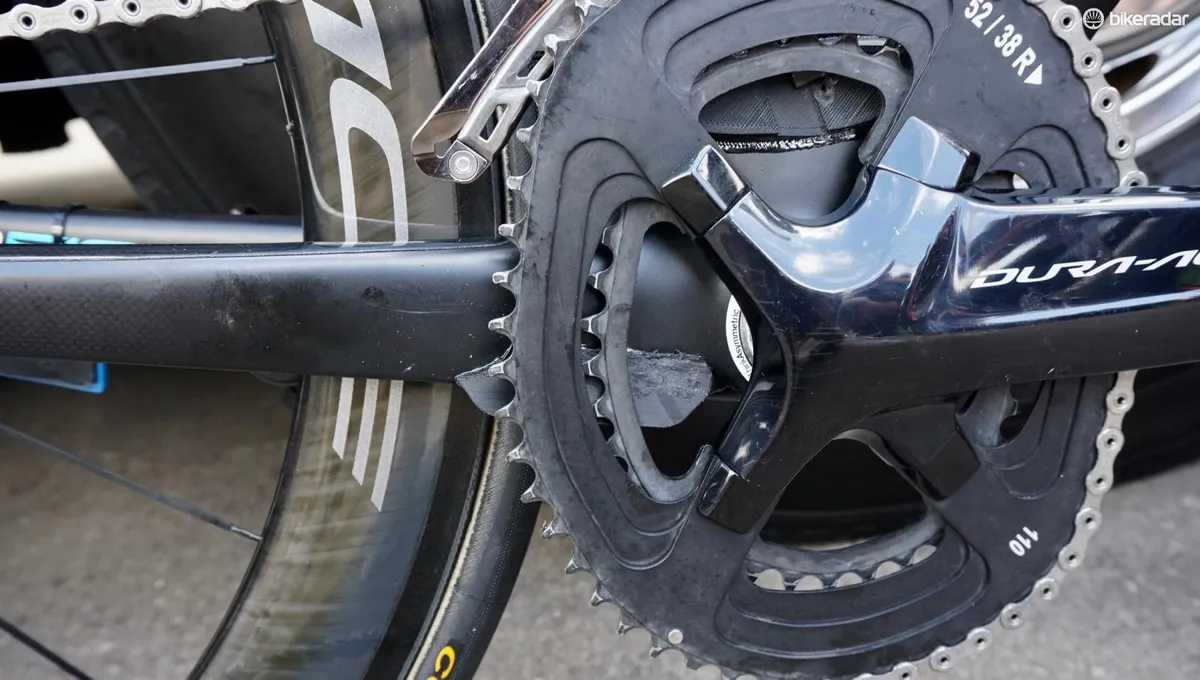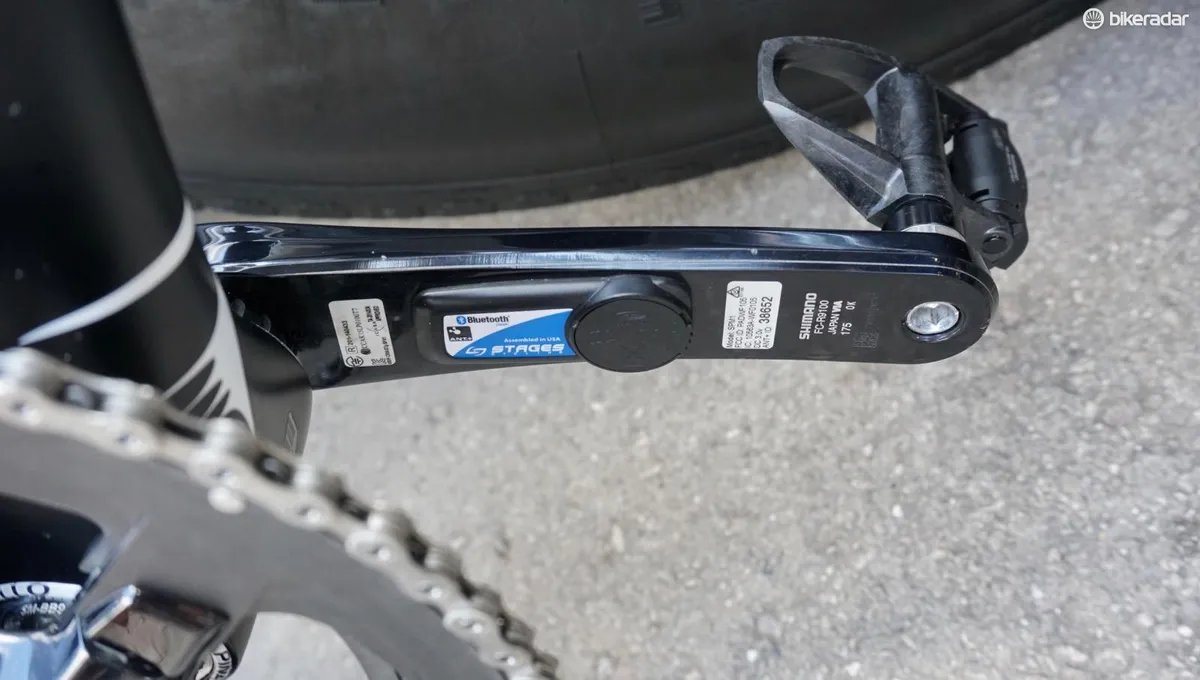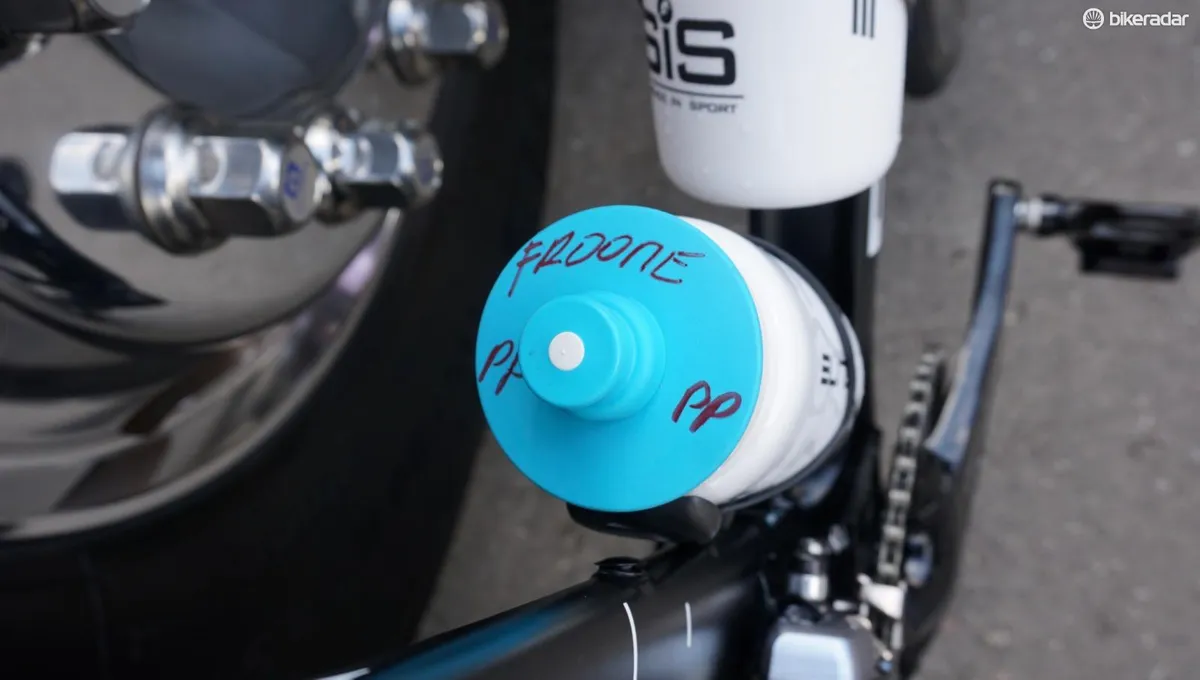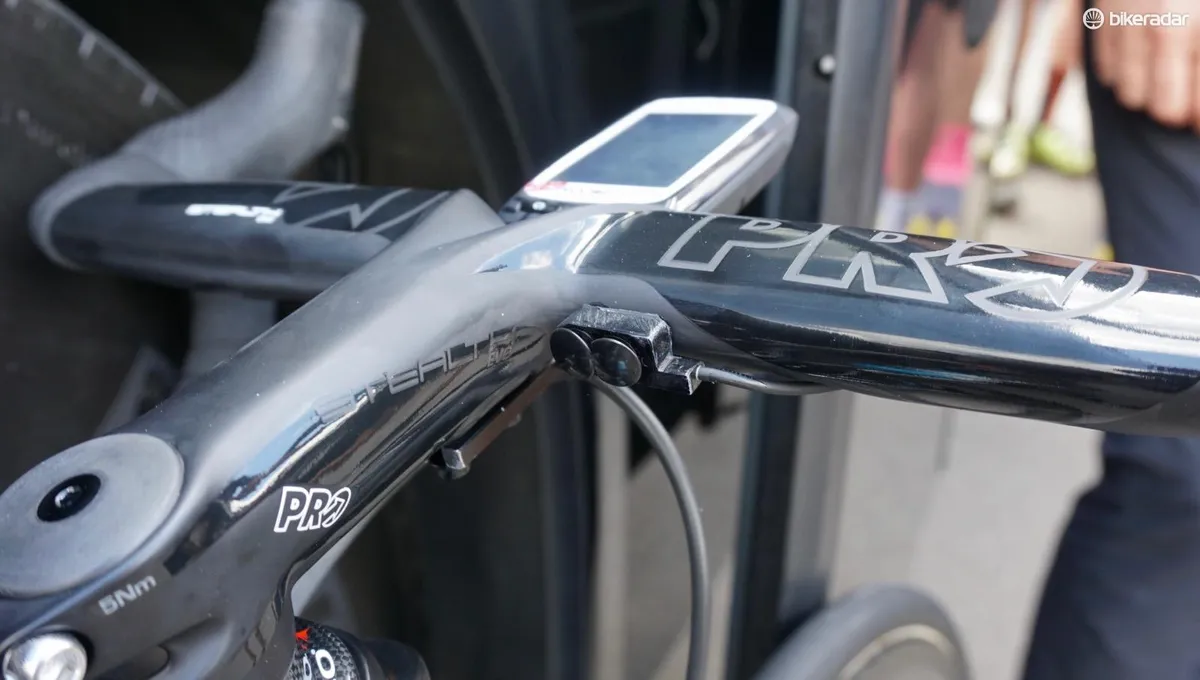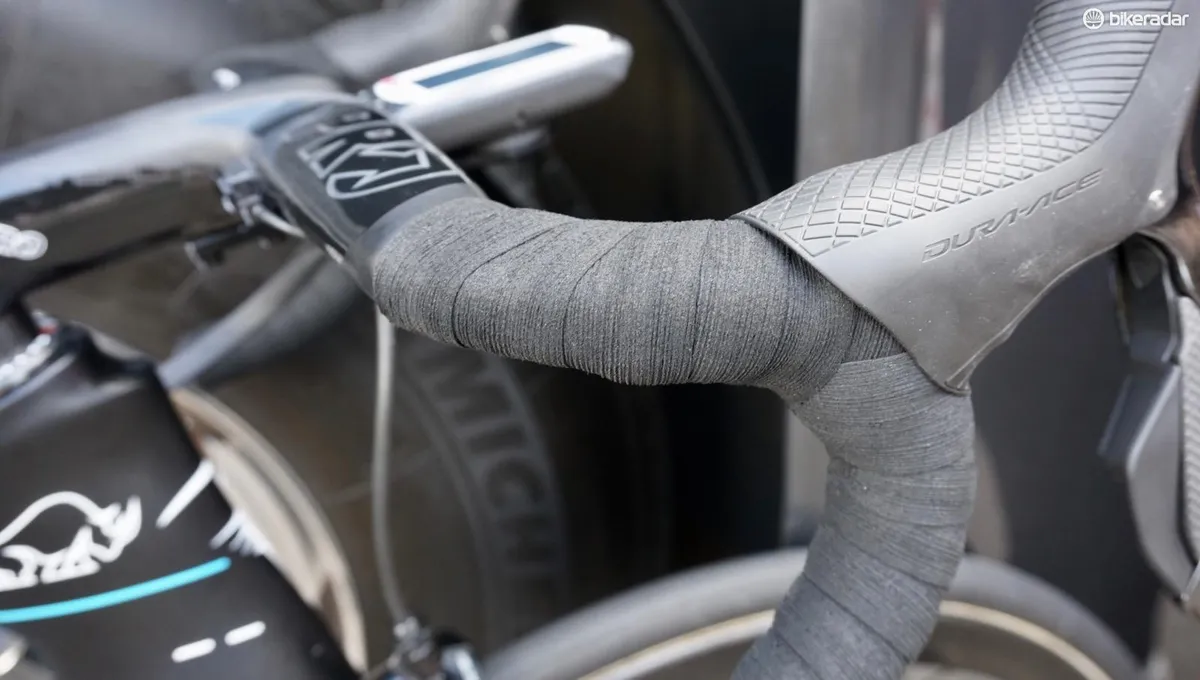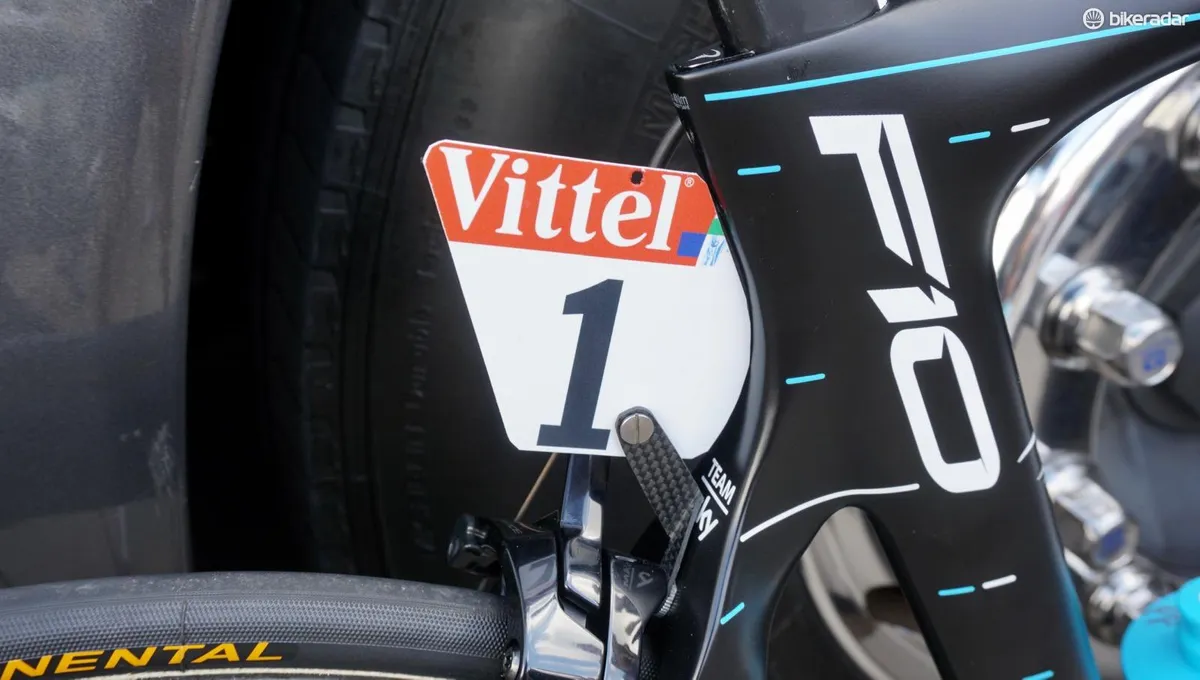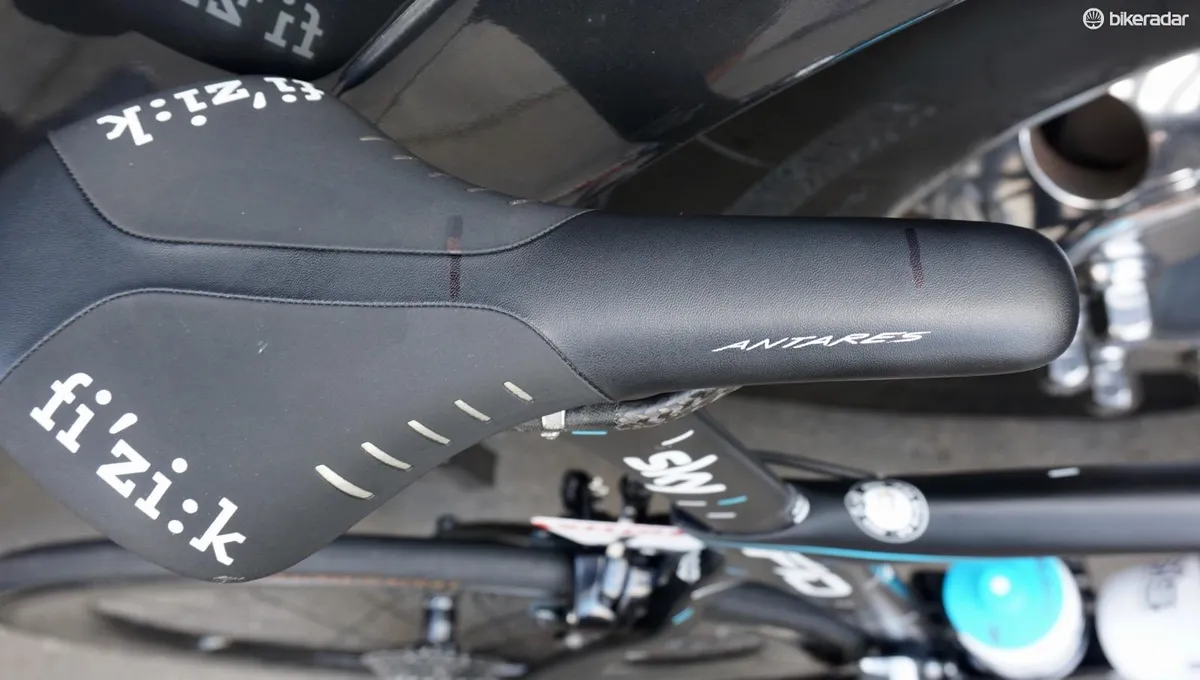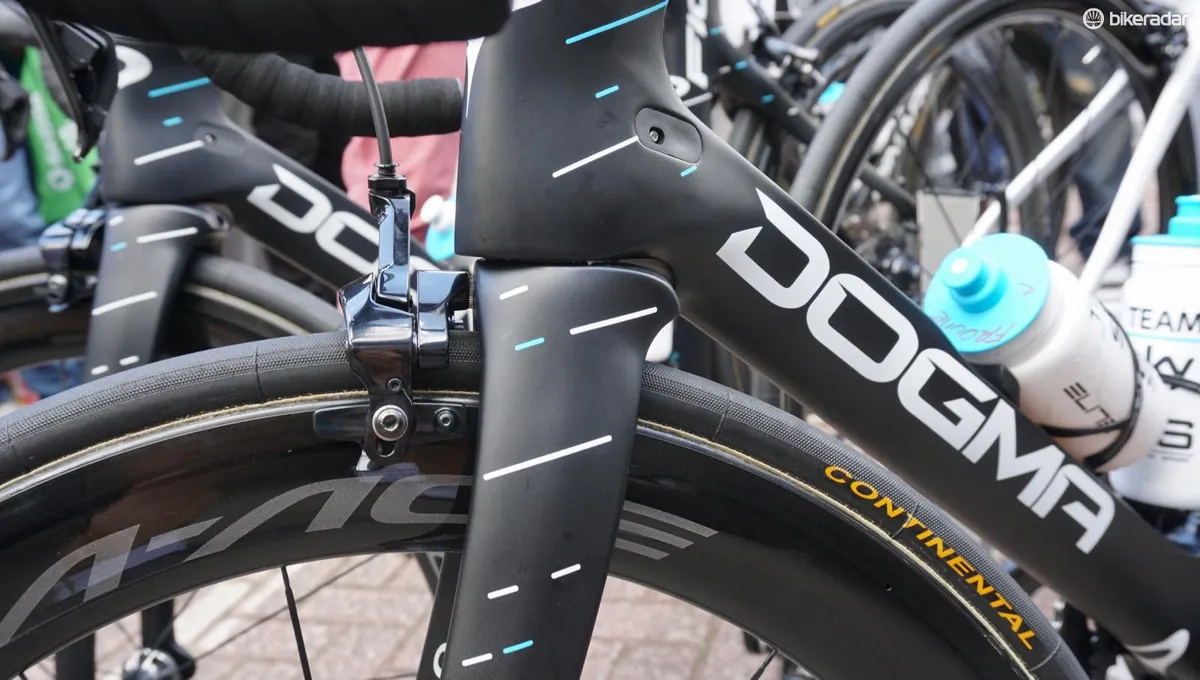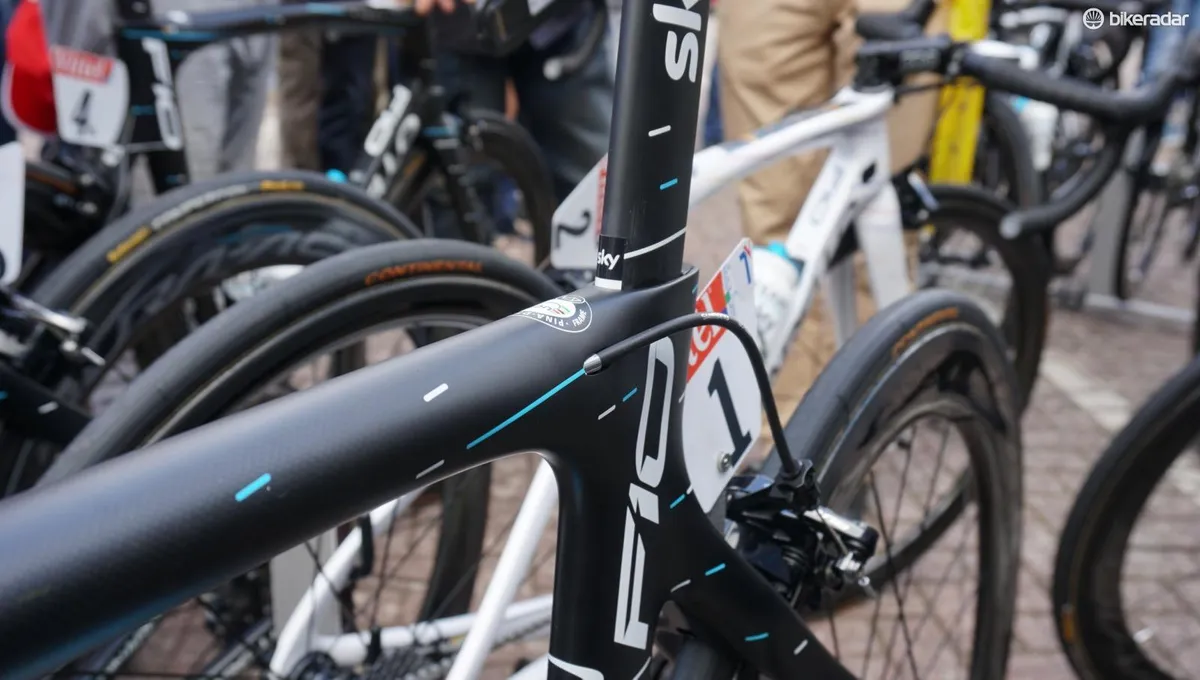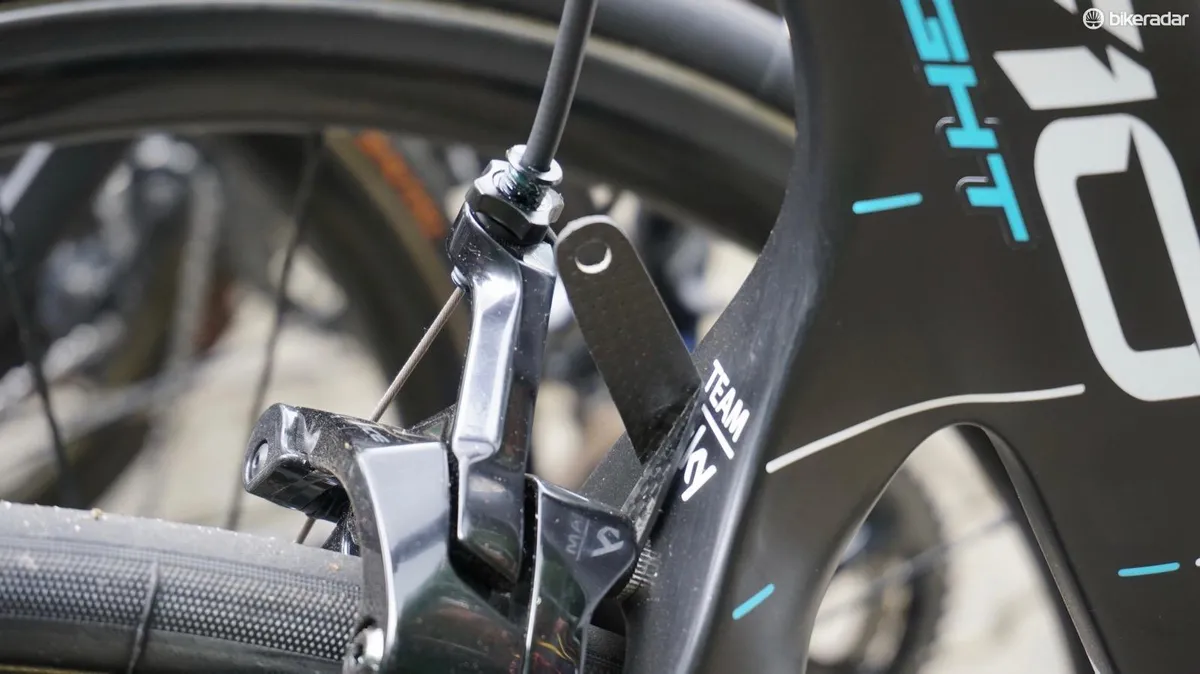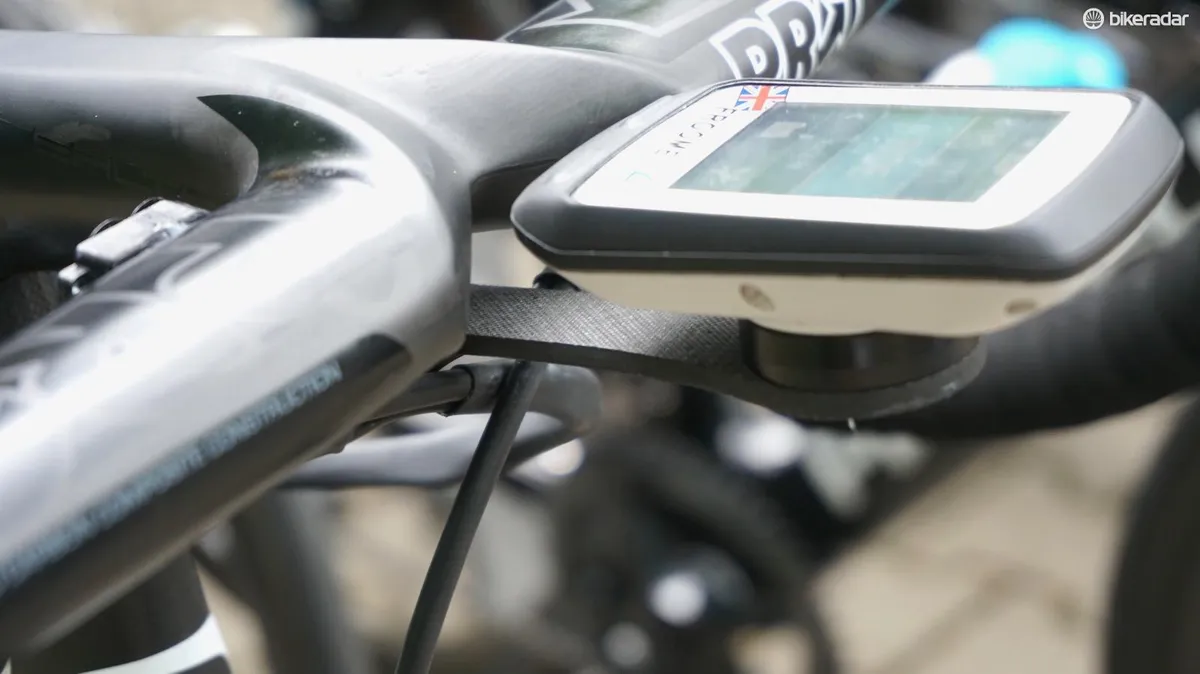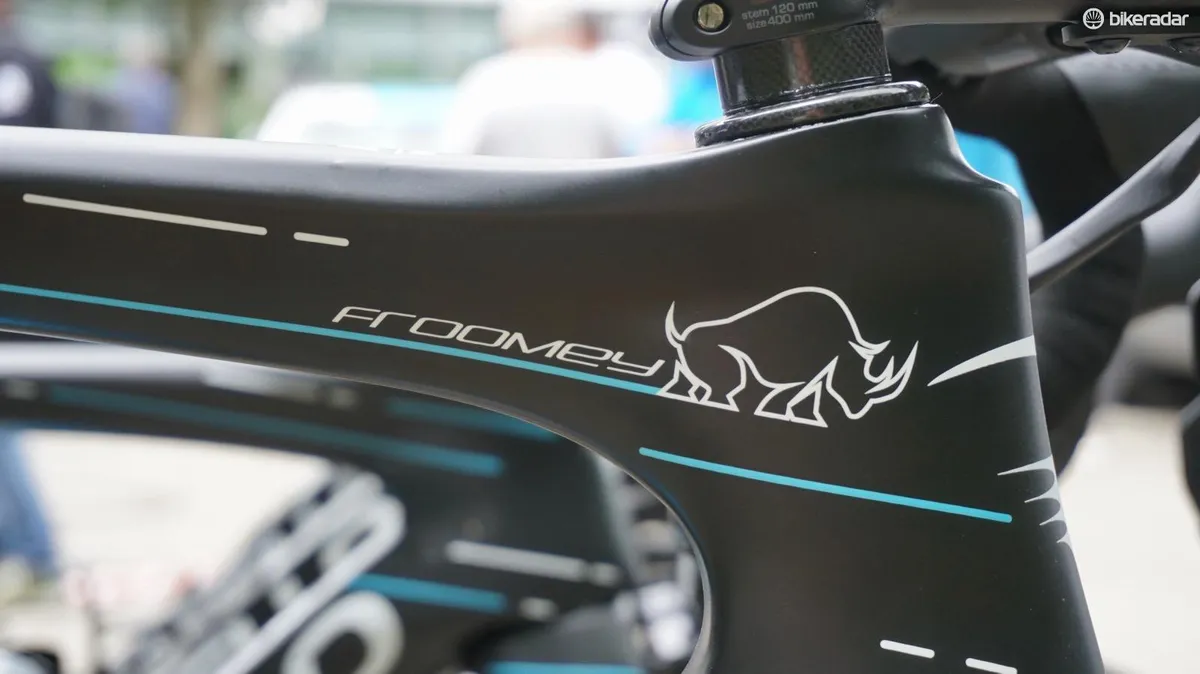Updated July 20 with comment from Garmin
Team Sky leader Chris Froome has a number of race machines at his disposal at the Tour de France, including multiple iterations of the Pinarello Dogma F10 and the new Pinarello Dogma F10 X-Light. While the bikes' setups are identical in terms of fit and geometry, there are some subtle differences between them. We take a look here.
- Pinarello Dogma K10 announced, K10-S Disk seems inevitable
- Fausto Pinarello: We don't think a high-performance bike needs disc brakes
- Pinarello to offer 3D-printed titanium cockpit as used by Froome
Pinarello Dogma F10 vs Dogma F10 X-Light
In the final week of the Giro d'Italia, a few Team Sky riders race-tested the new Dogma F10 X-Light for the first time. As the name implies, the new frameset is basically the same but lighter.
Pinarello claims to have shaved 60g by using a lighter carbon (Torayca T1100G UD) that has minimal resin, plus a new mold process.
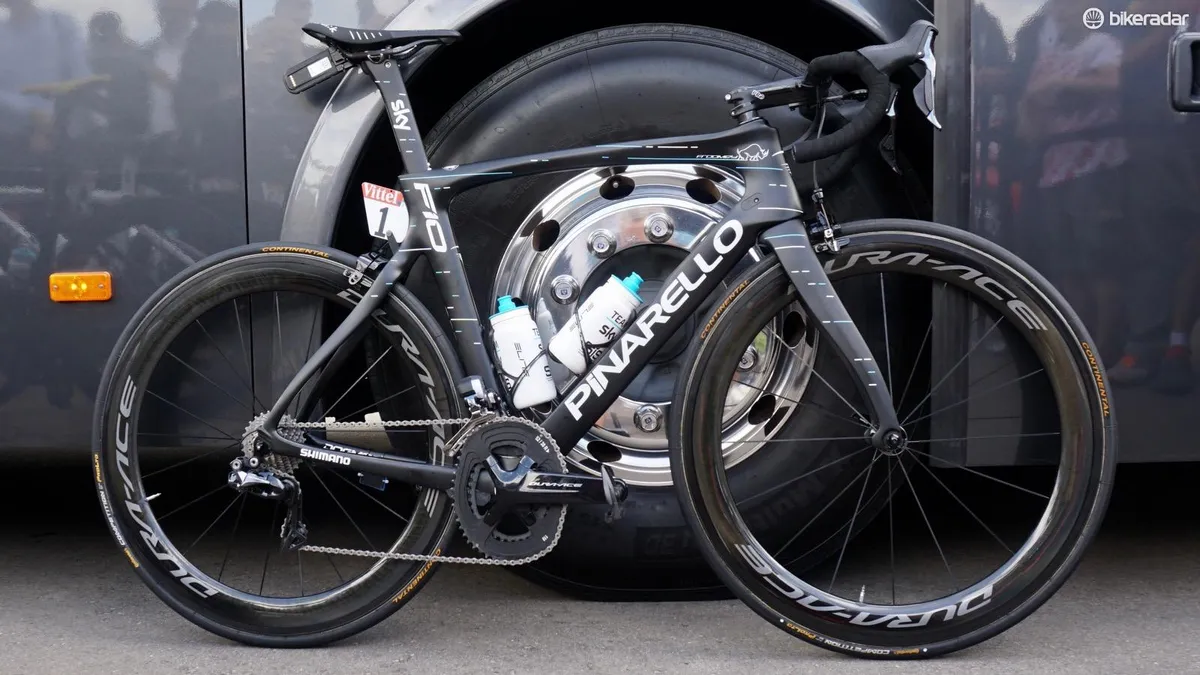
Pinarello claims that an unpainted X-Light weighs 760g in a size 53cm. For contrast, Specialized claims its new Tarmac is 733g — painted in size 56cm. And Trek's new Emonda weighs a claimed 640g — painted, size 56cm.
Both Dogma bikes share the same aero frame and seatpost, Italian threaded bottom bracket and standard brake calipers (instead of proprietary aero calipers that you see on some aero bikes).
Since Froome's bikes can't weight less than the UCI minimum of 6.8kg / 14.99lb, a few grams of frame weight isn't necessarily a big deal. It could arguably allow for the use of deeper (and heavier) aero wheels while staying right at that 6.8kg mark.
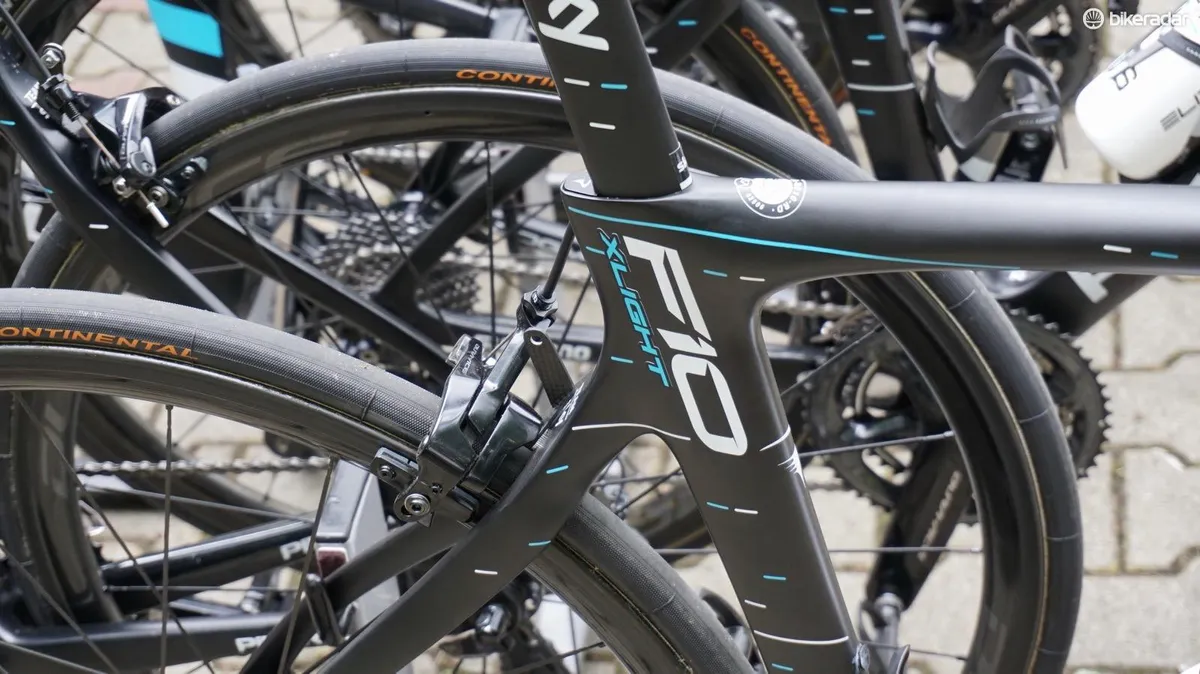
Garmin Edge 510 and 810 instead of 520 and 820
While Froome's frames are the latest and greatest, his GPS computers are not. Garmin's Edge 520 and 820 computers are the current top-end race models, but Froome has stuck with the previous 510 and 810 models for better connectivity to power and heart-rate monitors.
Team Sky uses Stages power meters, which can connect via Bluetooth or ANT+ to GPS computers. Garmin owns ANT+, and only uses that frequency for its computers (excluding smartphone Bluetooth connections) for peripherals like power meters, speed sensors and heart-rate straps.
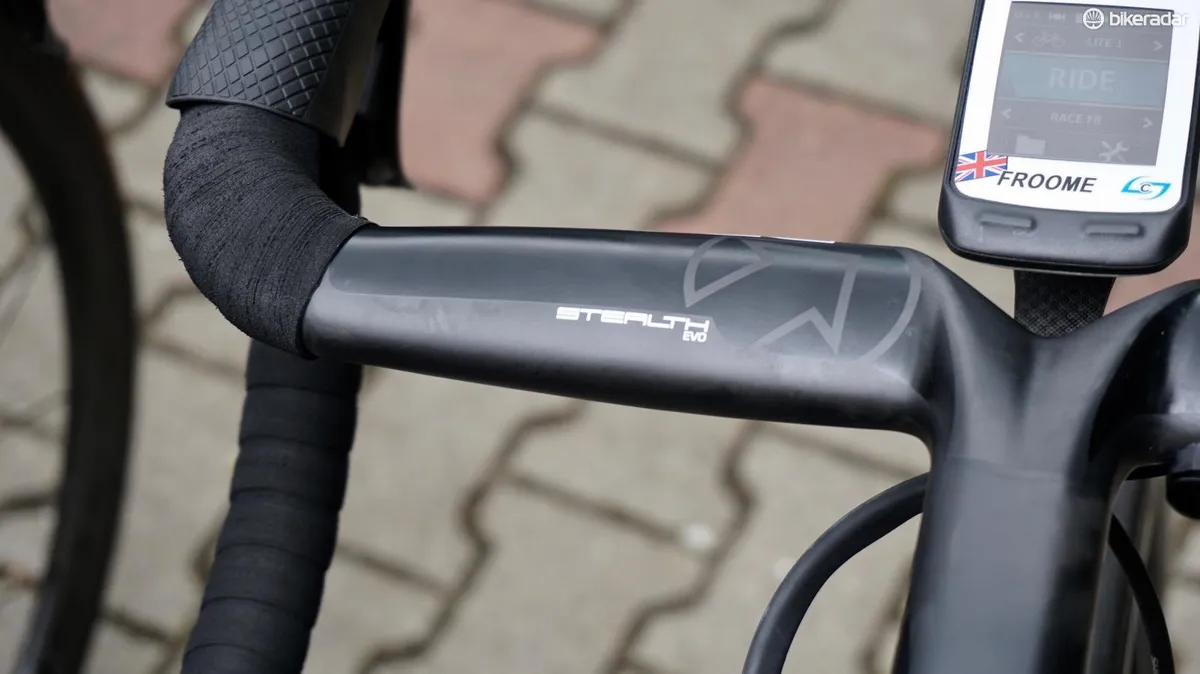
Garmin made a change in the placement of the ANT+ radios, and that seems to have affected how well the newer units hold signals, according to staff at Stages.
"Team Sky tested the newer models and have had horrible luck especially in a peloton of 198 riders surrounded by TV cameras and other transmitting devices for Velon, etc," said Stages senior vice president Pat Warner.
[Relatedly, if you have an Edge 520 or 820 and experience regular drops of ANT+ data, make sure to turn off any sensors you aren't using in Settings>Sensors. At least this has made a big difference for me.]
At the Tour, Froome has used both Edge 510 and 810 head units.
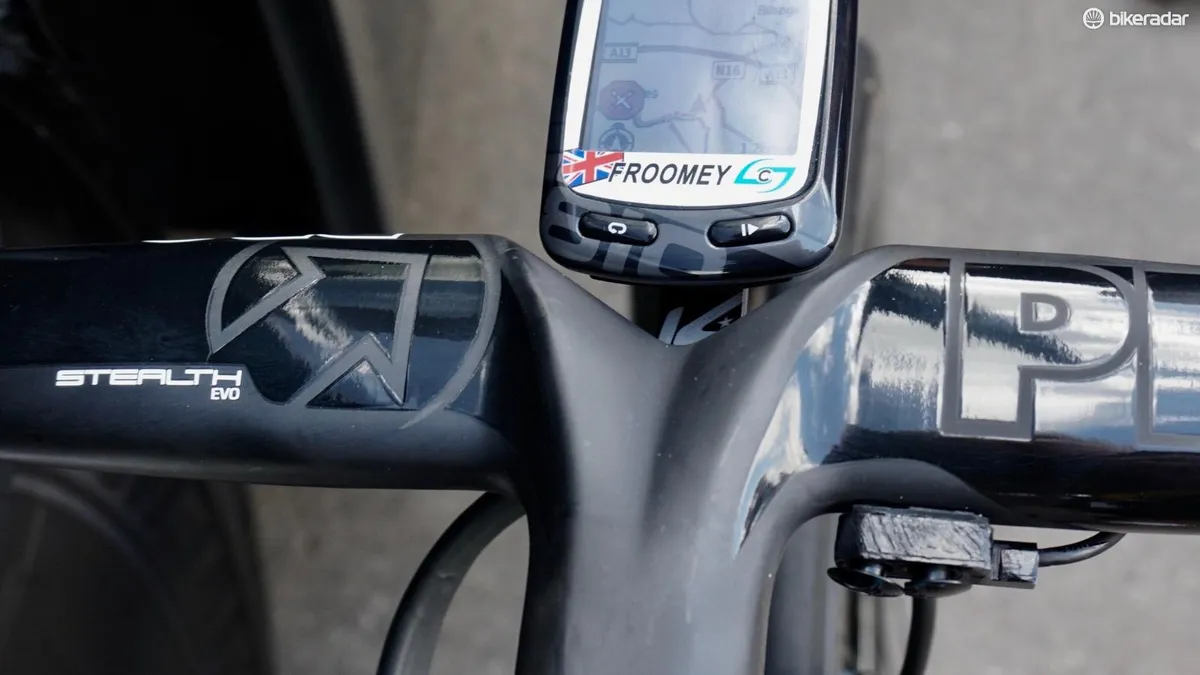
Stages recently launched the Dash computer, which connects to meters on Bluetooth or ANT+. Team Sky sponsor Wahoo also has a head unit, the Elemnt Bolt, which also connects to meters and other peripherals and Bluetooth and ANT+. Both companies would like to see Team Sky use their computers, but for now, the old Garmin Edge computers are what go on Team Sky bikes.
For Garmin, media relations specialist Stephanie Schultz said other teams have no such issues with the GPS giant's latest computers.
"Garmin does not sponsor Team Sky or Chris Froome, so we can’t comment about non-sponsored teams and their device preferences," Schultz said. "That being said, we sponsor nine professional cycling teams, including five World Tour teams (Cannondale-Drapac Pro Team, Movistar Team, Astana Pro Team, FDJ Pro Team and Team Dimension Data for Qhubeka) and four mountain biking teams (Trek Factory Racing XC, CLIF Pro Team, CUBE Action Team and Scott-SRAM MTB Racing Team). All these teams use our current devices – Edge 520, 820 and 1000 cycling computers – that offer our latest technology. Additionally, we are aware of several non-sponsored athletes and teams who use our current cycling computers – with power meters of their choice – and are not reporting the issues that Stages is claiming."
K-Edge vs blank Garmin mounts and number holders
The small American company K-Edge has provided chain catchers to pro teams for years. The company was co-founded by tools manufacturer Eric Jensen (AceCo Precision Tools) and Joe Savola, husband of and mechanic to Olympic gold medalist Kristin Armstrong. The chain catcher came about after Armstrong dropped her chain at the 2006 world time trial championships — which she still won.
K-Edge: The story behind the company that started the craze
These days, K-Edge provides chain catchers and Garmin holders to a few pro teams, including Team Sky.
While chain catchers might seem superfluous on race bikes with Shimano's Dura-Ace Di2, they certainly don't seem like overkill on Froome's bikes with his O.Symetric chainrings. Even proponents of oval chainrings will tell you that shifting between the rings isn't as smooth as it is with round rings. So, you can find K-Edge chain catchers on all Froome's bikes.
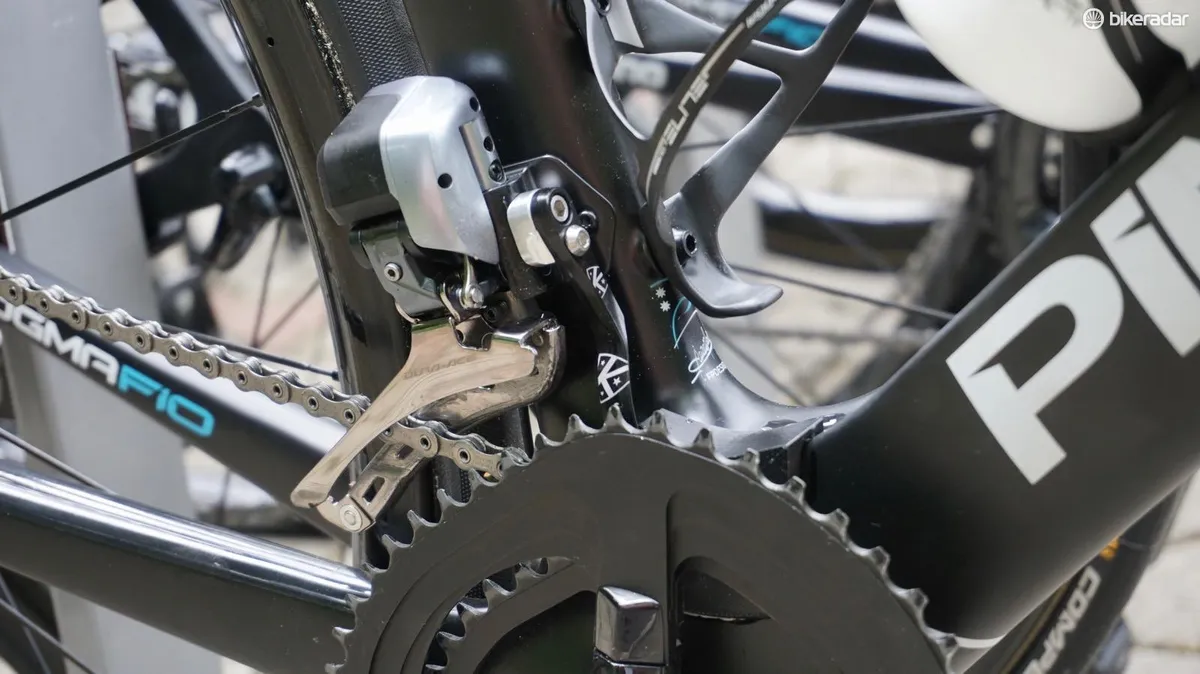
For Garmin mounts, Froome has both K-Edge products and unmarked carbon pieces. As with the carbon number holders that the team uses, team mechanic Thomas Kousgaard told BikeRadar that he wasn't sure where they came from, "some company in Slovenia, I believe." Both the carbon attachments and the K-Edge models bolt to the bottom of the PRO Stealth Evo integrated bar/stem that Froome favors.

Check out the gallery above for a closer look at Froome's Pinarello Dogma F10 and Dogma F10 X-Light bikes, and be sure to visit Cyclingnews for complete coverage of the 2017 Tour de France.
Complete bike specifications
- Frames: Pinarello Dogma F10 and Pinarello Dogma F10 X-Light
- Front brake: Shimano Dura-Ace 9100
- Rear brake: Shimano Dura-Ace 9100
- Brake/gear levers: Shimano Dura-Ace 9150
- Satellite shifter: deconstructed Shimano Dura-Ace Di2 climber switch
- Front derailleur: Shimano Dura-Ace 9150
- Rear derailleur: Shimano Dura-Ace 9150
- Cassette: Shimano Dura-Ace 9100, 11-28t
- Chain: Shimano Dura-Ace
- Crankset: Shimano Dura-Ace 9100 with 52/38t Ossymetric rings, 175mm
- Power meter: Stages Dura-Ace 9100
- Wheels: Shimano Dura-Ace 9100, variety of depths
- Tubulars: Continental Competition ALX, 25mm
- Integrated bar/stem: PRO Stealth EVO
- Pedals: Shimano Dura-Ace 9100
- Saddle: Fizik Antares
- Seatpost: Pinarello Dogma F10
- Bottle cages: Elite Custom Race Plus
- Computers: Garmin Edge 510, Garmin Edge 810
- Computer mounts: K-Edge, plus a blank carbon piece
Critical Measurements
- Rider height: 1.86m
- Rider weight: 69kg
- Saddle height, from BB (c-t): 790mm
- Tip of saddle nose to bars: 580mm
